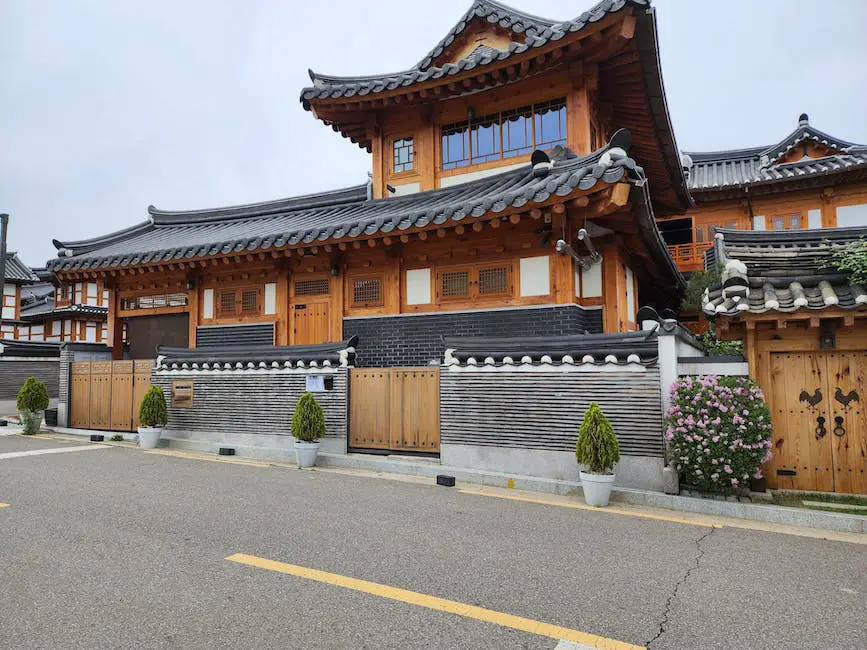
Daegu, a city known for its rich tapestry of history and modernity, offers a unique glimpse into the architectural evolution that South Korea has undergone. As I meander through its bustling streets, I can’t help but marvel at the harmonious blend of traditional hanok houses with cutting-edge skyscrapers piercing the skyline. It’s a place where every corner tells a story, and each building is a chapter of its own.
The Roots of Tradition: Hanok Houses
Let’s start with the traditional hanok houses, which are a testament to the ingenuity of ancient Korean architecture. These structures, with their gracefully curved roofs and use of natural materials, are designed to harmonize with their surroundings. They’re not just homes; they’re a philosophy made manifest. I’ve walked through neighborhoods where these hanoks stand proudly, their wooden beams whispering tales of yesteryears.
Colonial Influences and the Japanese Occupation
Fast forward to the early 20th century, and you’ll find that Daegu’s architecture tells a more complex story. During the Japanese occupation, the city saw the introduction of colonial-style buildings. These structures brought a new architectural language to Daegu, one that juxtaposed sharply with the local aesthetic. Yet, they remain part of the city’s historical fabric, a reminder of a painful past woven into the present.
The Modern Metamorphosis
Post-war Daegu embarked on a journey of rapid modernization. The cityscape began to transform with the construction of modern high-rises and commercial buildings. It was a time of growth and change, with the skyline reaching higher as if in a bid to touch the future. I’ve watched these glass and steel giants rise, each one a symbol of Daegu’s relentless march towards progress.
Contemporary Architectural Marvels
Today, Daegu’s architecture is a showcase of contemporary design. The city is home to buildings like the Daegu Tower, an iconic structure that offers panoramic views of the urban expanse. There’s also the Daegu Art Museum, a modernist marvel that houses the city’s creative pulse. These landmarks are not just places; they’re experiences that embody the spirit of innovation.
Green Spaces and Sustainable Design
In recent years, Daegu has embraced the concept of sustainable architecture. The city is integrating green spaces into its urban design, creating oases amidst the concrete. Buildings are being constructed with eco-friendly materials and technologies, reflecting a global consciousness. It’s a commitment to the planet that’s both inspiring and essential.
Preserving the Past While Embracing the Future
What truly fascinates me about Daegu’s architecture is the delicate balance between preservation and innovation. The city respects its historical roots while boldly experimenting with new styles and technologies. It’s a place where the past is not overshadowed but celebrated within the contemporary landscape.
FAQs
- What is unique about Daegu’s traditional architecture?
Daegu’s traditional architecture, particularly the hanok houses, is unique for its emphasis on harmony with nature and its distinctive curved roofs. These structures are a beautiful representation of Korea’s architectural heritage.
- How has Daegu’s architecture changed over the years?
Daegu’s architecture has evolved from traditional hanok houses to Japanese colonial buildings, to modern high-rises and contemporary designs. The city has seen a significant transformation, reflecting its economic growth and cultural shifts.
- Are there any sustainable architectural projects in Daegu?
Yes, Daegu has several sustainable architectural projects, including eco-friendly buildings and the integration of green spaces into urban planning. These initiatives demonstrate the city’s commitment to environmental sustainability.
Conclusion
In conclusion, Daegu’s architecture is a rich mosaic that illustrates the city’s journey from its historical roots to its current status as a hub of modernity and innovation. From the humble hanok houses to the awe-inspiring contemporary structures, each building tells a story of cultural identity, resilience, and forward-thinking. As Daegu continues to grow and evolve, its architecture remains a testament to the city’s ability to honor its past while reaching for the future. For anyone interested in the confluence of history and modernity, Daegu’s architecture is a must-explore realm.
Daegu’s architecture is more than just a collection of buildings; it’s a narrative of transformation and a reflection of the city’s soul. Whether you’re a history buff, an architecture enthusiast, or simply someone who appreciates the beauty of urban landscapes, Daegu offers a captivating journey through time and design.